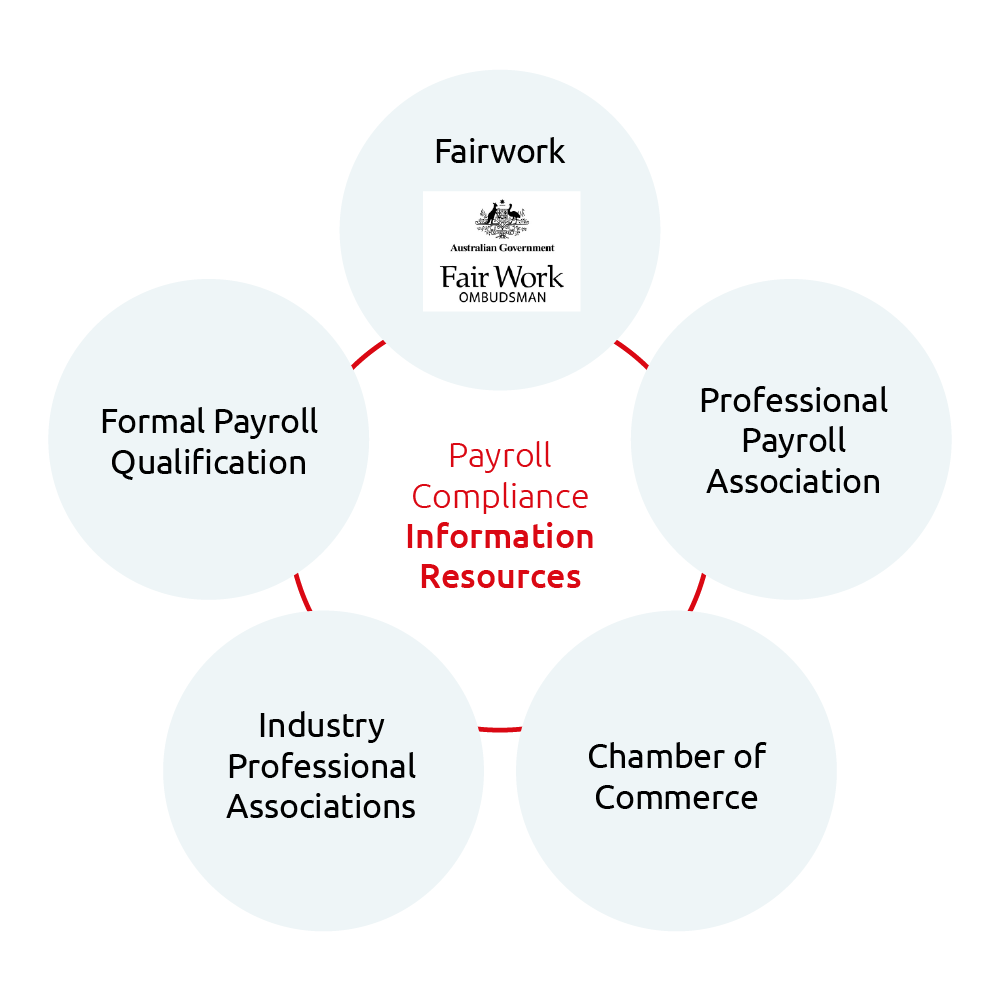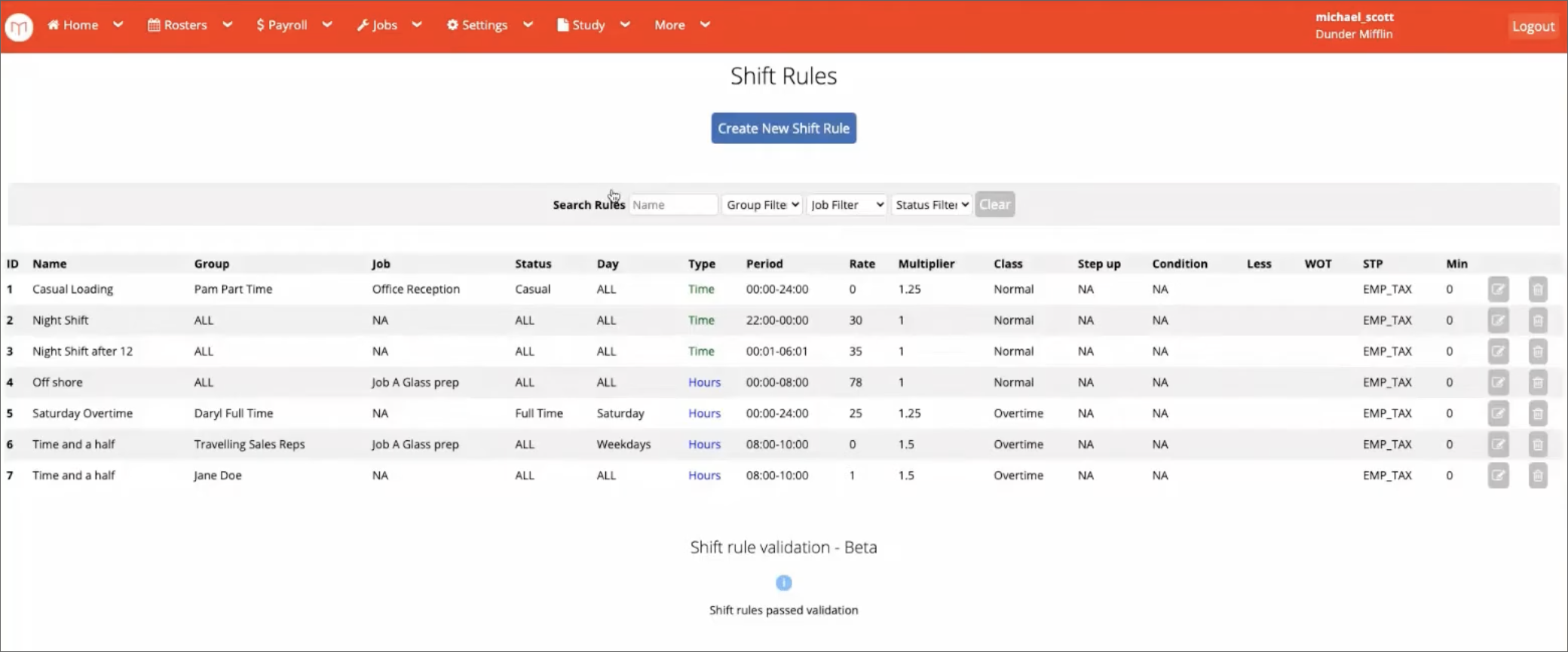- What is payroll compliance?
- The importance of payroll compliance
- Inefficiencies and risks associated with failure to comply
- Where do I start?
- Keeping up with changing requirements
- The role of technology
- Final thoughts
Payroll compliance - we know it might not sound very sexy.
In fact, in a business world where “disruption” and “innovation” are fashionable words, compliance might seem like a boring, responsible sibling in a family of rowdy risk takers.
But bookkeepers, accountants and payroll professionals know first-hand that having a clear understanding of rules and regulations is one of the most important parts of running a successful business.
Taking risks might be rewarded in some parts of business, but when it comes to payroll, it’s best to avoid becoming front page news for all the wrong reasons.
A testament to the compliance-focus of the Australian business community was the record attendance of our latest Webinar, where Cassandra Scott (Director of Laurus Bookkeeping and Board member of the Australian Bookkeepers Association), Garth Belic (Compliance Specialist and General Manager at PayCat), and Jon Arrigo (Director and National Customer Relations Manager at Microkeeper) discussed the ins and outs of payroll compliance.
You can watch the full video above or find some of the best quotes and insights summarised below.
What is payroll compliance?
Let’s start with the obvious first point of discussion, just exactly what does payroll compliance mean? For Cassandra “the most simplistic response is that payroll compliance is making sure that people are paid the right amounts at the right times. It is fundamentally that simple - but as we all know it can be far more complex than that, because we're dealing with people and we're dealing with legislation and awards, things that are outside of our control. When we're talking payroll compliance we are looking at the linkage between the employer, the employee and legislation.

Payroll compliance is about people being paid the right amount, at the right time and being able to access all of their legally stipulated entitlements - that also covers issues around terminations, performance management...as well as understanding all of those parts at a very very granular level.”
Key takeaway:
Payroll compliance is the result of an effective link between employer, employee and correct legislation.
The importance of payroll compliance
Payroll is a part of the Australian compliance landscape that has been overlooked for so long, to the detriment of a few high profile cases in recent years. This has sparked concern for many employers and payroll professionals eager to avoid making the same mistakes.
From Jon's experience, “In many situations, when I walk into meetings, payroll compliance is the elephant in the room. These days, people are looking at it with a lot more emphasis. Companies want to ensure that they are doing the right thing by their staff members - and in saying that - not ending up being the next front page news article, whether it be intentional or unintentional.”
There has also been an increase in concerns over compliance of salaried staff members and if they are getting paid correctly, explains Jon, “People have always looked at a salaried person and said: ‘okay, we pay them a salary which is above the award, so we’re covered.’ But that doesn’t always cut it.”
“Overall for us as a technology provider, it’s great to see there is a growing awareness around compliance. Because that way, we can help automate a process that has been set up by an informed individual or even an expert.”
Key takeaway:
Payroll compliance is the source of fear for many business owners, however it doesn't need to be daunting with the effective use of relevant resources, industry experts and software.
What are the risks of not abiding by payroll compliance rules?
It is important to set things up correctly from the start in order to avoid:
- Damage to reputation and brand
- Non-compliance fines
- Overpaying staff
The biggest payroll compliance inefficiencies can occur:
- Capturing time and attendance data
- Poor interpretation of data ‘small human errors adding up over time’
- Complex systems that are hard to keep track of and hard to spot errors when they occur.
- Chasing up timesheets
- Dealing with leave management manually
- Setting up a new employee, understanding their role and requirements
- Tax and super obligations being met correctly
“All these things take time and are prone to human errors.” explains Garth. “It’s sad, because we've got all this beautiful payroll technology, like Microkeeper, out there and many businesses are still filling in paper timesheets. This leads to transcription issues - fives and sixes look very similar in some handwriting 😀 - or issues when timesheets are being reviewed and interpreted.”
Jon agrees, “I think Garth nailed it. There can be all these manual systems in place and the double handling and cost that's attached to that...even just the sheer labour effort to support these processes is often missed.”
Cassandra agrees that “There are a number of payroll services and timesheet systems and HR systems out there that automate a lot of what we’ve been talking about. Sadly, we often see business owners seeing the cost of those systems as being too big a cost for the business.
What they're not necessarily recognising is that manually keeping all of these records and systems and processing manually is actually far more expensive than investing in a system that provides the automation, the repetition, the standardisation, the risk management…”
Key takeaway:
Business need to weigh up the cost of implementing payroll compliance tools (ie. industry expert, software) with the risk of making and fixing mistakes.
Where do I start to make sure I am payroll compliant?
There are a number of things Cassandra addresses when approaching a new business looking to ensure payroll compliance is a key focus and done the right way from the start:
- Look at existing technology processes and systems in place
- Who has access to existing processes (data security, respecting confidentiality)
- Employees - do they have contracts of employment in place?
- Discuss the importance of data security (for example; having documentation in one place not printed out and left on a printer for everyone to see)
Simply starting the conversation with the business owners about how they need to look at and refine their systems is a good start, remembering that we don't have all the answers. There are many experts in the marketplace that can be beneficial to business achieving compliance from a payroll and HR perspective.
Key takeaway:
Start out by reviewing your existing processes, evaluating security, confidentiality, opportunities for improvement, structures and documentation. The first step is to simply start the ball rolling with honest conversations to start finding appropriate solutions.
How do you keep up to date with important payroll information?
The key to staying on top of your payroll compliance obligations is finding out where you can get the most relevant and up to date information.
Choose relevant and reliable sources of information such as:
- Fair Work The simplest place for that is subscribing to Fair Work, who are sending out, on a daily basis and sometimes multiple times a day, emails about changes, discussion or consultations that are happening about awards and award changes.” - Cassandra
- Professional Payroll Association membership
- Chambers of Commerce (eg. Chamber of Commerce Queensland)
“We're a member of a professional association for payroll so we've got the ability to tap into their resources on a regular basis and we subscribe to industry associations or chambers of commerce.” - Cassandra - Industry Professional Associations (eg. Master Builders, Master Plumbers)
These “generally have very good HR and payroll service providers within them. The beauty about those sorts of organisations is they're usually very focused on the awards that relate to the industry that they're supporting and understand it at a very deep and detailed level.” - Cassandra - Getting a formal qualification in payroll (eg. Diploma of Payroll)
A great starting point for anyone interested in getting involved in the payroll environment. Cassandra predicts that for Bas agents, bookkeepers, payroll specialists, providing third-party services to businesses. “that there will become a mandatory requirement for anybody working within a payroll environment to have some sort of a formal qualification and registration.” - Cassandra

Key takeaway:
Stay on up to date with relevant information through the use of a variety of relevant and trustworthy industry sources, paying attention to the finer details.
“It's about finding where the information is and tapping into that. Not just disregarding that email that floats through your email account. Actually taking the time out of your day to read it because there's often absolute gold in there.” Cassandra
An easier way of keeping on top of payroll compliance?
The team at PayCat has taken this one step further and collated information from multiple government sources including Fair Work and the ATO to create an updated database of industry award and allowance information.
Garth explains “We just did it, there was a shortfall online of this information being all in one place. So we just got sick of looking at four different websites every time we needed to interpret something so we just put it all together. We get good feedback on this. It's free to the public to use and that should be really helpful for the people.”
The role of technology in payroll compliance
Once you’ve collated the most up to date information and data, the next challenge is putting this into a system that will accurately process this information in relation to your own workplace.
Jon explains “I think everyone will agree the Australian Award system is exceptionally complex, we've got a lot of fantastic resources, especially the one Garth just showed us today, but it's then getting that information and configuring a system telling it how we want to calculate all of these entitlements, penalty rates etc.
Within Microkeeper we keep it very customisable per business, per employee, per award, and potentially per job or role set for that staff member.”
Microkeeper allows you to set up/automate:
- Rate Rules
- Payroll Rule Sets including shift rules
- Ability to rank rules to determine what takes priority when being applied (Weekly rules (rules centered around a pay-cycle weekly fortnightly monthly etc.)
- Public Holiday Rules
- Break Rules
- Deduction and expense automation (salary sacrificing, protected earnings)
- Extra earnings (ie. allowance eligibility and how they are applied)

Setting up your payroll rules takes the majority of the heavy lifting enabling your payroll compliance expert to come in and easily update changes as they occur, as well as giving you an understanding around these changes and anything that needs to be considered amended moving forward.
“The final takeaway point from this is that a system is only ever as good as the person driving it, so having an expert in the background, that is supporting you through your payroll journey is a key component of an effective payroll toolkit,” Jon.
Key Takeaway:
Setting things up correctly from the start can save a lot of (costly) headaches down the line. Don't solely rely on your software, enlist someone who is qualified to accurately interpret and build your rules.
Final thoughts...

Cassandra
“I make this point for those that are providing services to businesses, don't expect to know everything. The most powerful words that you can actually say to your client are ‘I actually don't know, but leave that one with me and i'll go through my network of experts and we will get you an answer for your business.”

Garth
“Poor compliance is not about ‘hey I missed this one payslip’. It’s caused by the failure of the system behind your processes. You need to ask ‘what was the system behind it that caused that loss?’ If you think about it that way you'll get it right because if you try and shortcut the system, it's going to catch up with you eventually and that's when you become the headline. ”

Jon
“Don't be scared to ask, there are no silly questions, everybody has got a common goal to try and get this right. There are plenty of resources and experts that have done this all before. Utilising those will make it really easy, so don't let this consume you, don't let this be something that's going to keep you up at night because there's plenty of resources out there to be able to help so take advantage of those.”
Like to know more?
Thanks again to our informative guest panelists Cassandra Scott (Director of Laurus Bookkeeping and Board member of the Australian Bookkeepers Association), Garth Belic (Compliance Specialist and General Manager at PayCat).
If you'd like to discuss how to approach payroll compliance at your business, book a chat with one of our specialists.



.jpg)